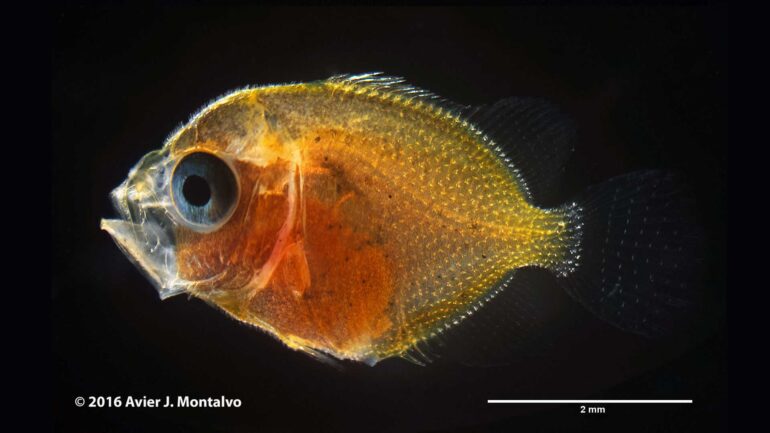The Potter’s Angelfish is a gorgeous species of Centropyge which is endemic to the Hawaiian Island chain. While this fish is only collected in the Pacific Ocean, a recent captive breeding breakthrough may make this fish available from aquacultured sources in the future.
This morning Rising Tide Conservation announced that they had successfully raised Centropyge potteri from captive spawned larvae, marking the first time that the Potter’s Angelfish had been captive bred.

With a great many achievements under its belt including the captive breeding of yellow tangs, yasha gobies and regal blue tangs, it comes as no surprise that Rising Tide Conservation is behind the breakthrough with Centropyge potteri. However with Potter’s angelfish hailing from Hawaii which is a hotbed of captive breeding of popular reef aquarium fish, it is a surprise that captive bred Potter’s angelfish hadn’t happened sooner.
Part of the challenge of breeding Centropyge potteri is that this species has somewhat specialized feeding preferences. Unlike many species of pygmy angelfish, Potter’s angelfish are constant grazers which will take prepared aquarium foods, but they won’t quickly fatten up like more popular species such as flame and coral beauty angelfish.

Interestingly, the successul rearing of these captive bred potter’s angelfish was done in a multispecies larval tank with several species of pygmy angelfish mixed in. This captive breeding breakthrough was performed as a less of a targeted effort to breed this species and more of a proof-of-concept to show that it is possible.
It’s been quite a year for successful captive breeding of marine reef angelfish, and we’re truly excited about Rising Tide’s accomplishment with the Potter’s Angelfish. Centropyge potteri is sometimes collected in interesting aberrations such as the all-blue Potter’s angelfish, and a xanthic potter’s angelfish, so perhaps we’ll see these unique forms in a fraction of the captive bred potter’s angelfish in the future. [Rising Tide]



